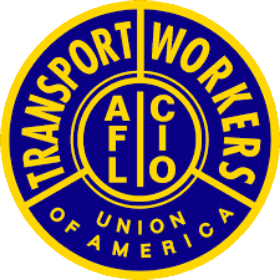Published 09 Feb, 2012
The Senate approved the FAA Reauthorization conference report earlier this week. Below is more information on the process, TWU’s advocacy efforts, and the benefits of the bill for our Members.
Following three-and-a-half years without a full FAA reauthorization, which led to 23 stopgap extensions and one painful showdown of the FAA, the Senate approved the “FAA Air Transportation Modernization and Safety Improvement Act” 75-20 on February 6, 2012.
The bill was introduced in February of last year, and contains several issues of great importance to TWU members. Congressional Republicans attached an unrelated labor provision to the bill, which labor unions, Democratic leaders, and President Obama saw this issue, viewed as a nonstarter. This issue— the reversal of the NMB’s yes/no ballot ruling—held the bill up for almost a year and was a key issue during the FAA shutdown in August 2011.
Three weeks ago, Senate Democrats and the House Republicans informed us that a “compromise” was reached to strike the yes/no ballot provision. Instead, they made modifications to the way NMB elections are triggered and mandated frequent GAO reviews of the NMB’s work. TWU remains furious about the process under which this “compromise” was reached—with absolutely no consultation with labor unions, whose Members will ultimately be impacted by the changes they’ve made.
Regardless, funding the FAA— rather than dragging the debate into the next Congress, and preventing another shutdown— has been the ultimate goal. As President James C. Little told the press about the deal, “we can live with it.” Before the House was scheduled to take up the bill (which they passed 248-169 on February 3), President Little sent a letter to every Member of Congress, specifically outlining TWU’s position on the legislation. You can read his letter here . In addition to affording the aviation industry a sense of certainty for the next four years, the “FAA Air Transportation Modernization and Safety Improvement Act” does the following:
–Mandates that foreign repair stations are subject to an annual inspection by FAA safety inspectors. The FAA Administrator may also mandate additional inspections if necessary based on identified risks
–Tasks the Secretaries of Transportation and State to work with ICAO countries to establish stricter drug- and alcohol-testing standards. The bill also calls for a formal rulemaking that would codify the testing in federal regulations
–Provides approximately $3 billion each year for NextGen development, with a June 2015 deadline for the FAA to implement NextGen arrival procedures in our busiest airports
–Orders the FAA and OSHA to set milestones toward achieving the goals of their 2000 Memorandum of Understanding regarding crewmember health and safety protections. It also requires that the FAA Administrator devise a policy statement describing how and when OSHA standards will be applied to crewmembers
You can review the bill, as passed, in its entirety here . In order for the bill to be law, President Obama must sign it within the 10 days (not including Sunday’s) allotted for presidential approval. As of this moment, the bill has not been signed into law.
While we remain skeptical about what good the newly-required GAO reports that were submitted in the NMB provision in the bill will do, and remain concerned about the ambiguity over merger procedures, we supported the bill until the final hour, and applaud both the Senate and the House of Representatives for passing it.
